Omnichannel Customer Service: Implementation and Best Practice Tips
Customer service presents as many challenges as it does opportunities, and one way to better serve your patrons is with omnichannel support implementation.
Based on a survey by Aspect Software, organizations utilizing omnichannel customer solutions experience 91% better customer retention rates year-over-year compared to those that don’t.
This article provides an in-depth examination of omnichannel customer service, including definition of omnichannel support, the reasons for implementing it, strategies for successful implementation, and relevant software examples that can benefit your business.
Useful tip: Leveraging dependable remote support software is key to delivering effective remote assistance. HelpWire enables you to conserve both time and resources by minimizing the need for in-person visits, while ensuring robust omni-channel customer support.
How Does Omnichannel Work?
Omnichannel customer support is customer advice and support throughout a comprehensive and implemented network of liaisons and devices. Companies with powerful omnichannel customer service can ensure exceptional CX (customer experiences) on a consistent basis—no matter what communication channel the customer uses.
The expansion of new communication tech and digital channels enables organizations to implement an omni interactions strategy for technical support. This allows teams to manage official responses and interactions throughout multiple channels such as:
- • Contact centers
- • SMS
- • Webchats
- • Live chat messaging
- • Social media
- • Email communications
One example would be if a customer support interaction started on Twitter, then transferred/carried on to a text message conversation, and then concluded with a phone call. As a result, the customer experience becomes less frustrating because customers don’t have to reiterate their original issue per each communication channel. The single conversation flows from one platform/channel/device to the next—which is ideal for your IT team as much as it is for the consumer.
At the end of the day, customers are seeking quick and easy experiences regardless of the channel they use (as well additional conveniences like quick order alerts and pick-up availability.) Omnichannel support helps fuel this fluid and customer-focused initiative. In that way customers can use the communication channel they prefer.
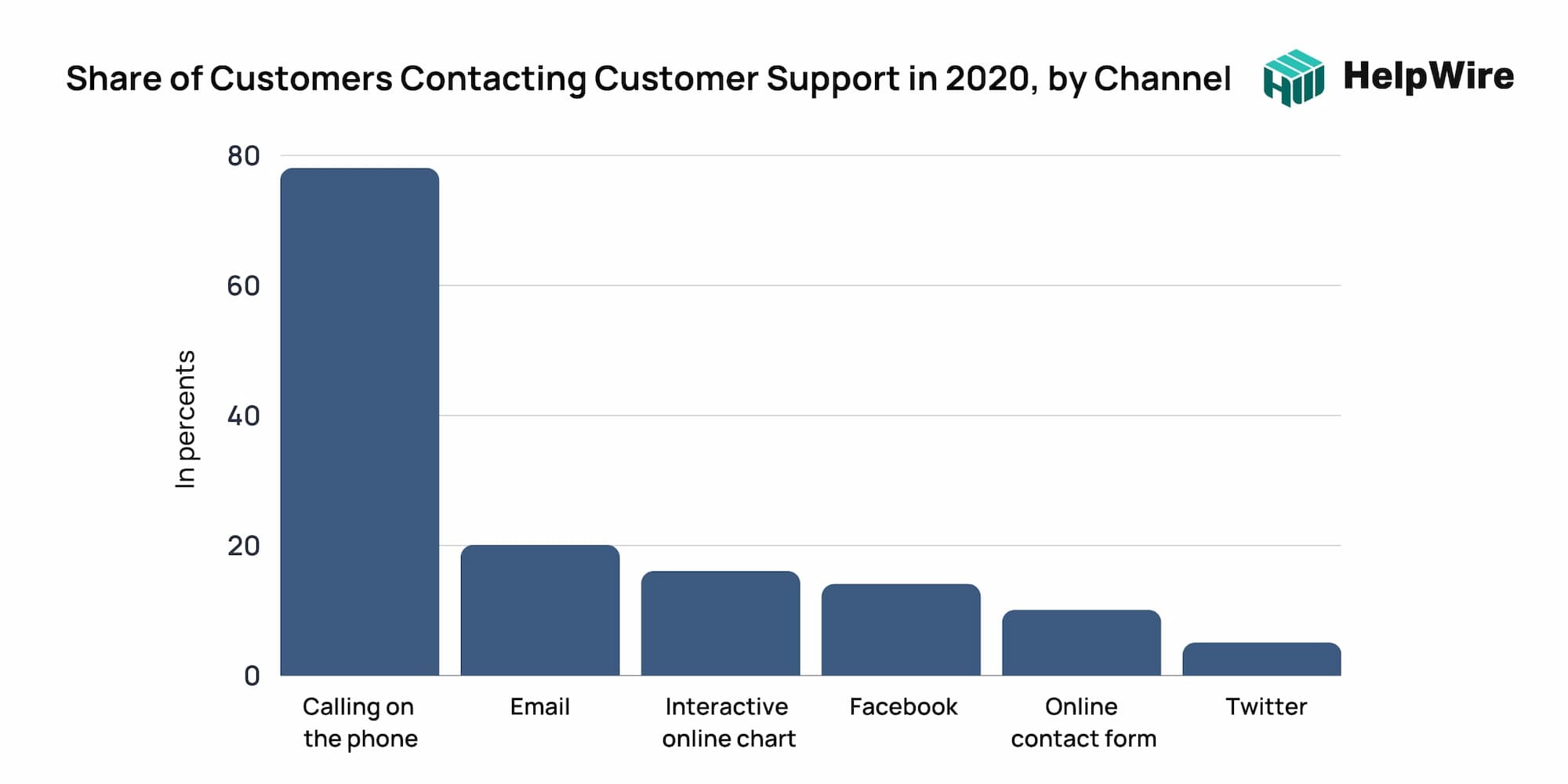
As you can see, even these days, the share of customers contacting support specialists over the phone is much higher compared to other options.
Multichannel vs Omnichannel Customer Service
While most believe multichannel and omnichannel customer service teams are exactly the same—there are actually multiple, albeit subtle, differences.
Omnichannel Communications | Multichannel Communications |
Prioritizes the customer 1st | Prioritizes the company 1st |
All communication channels integrate seamlessly into one another | Communication channels remain separate |
Consistent messaging and conversation history across channels | Messaging and conversation history are unique to each communication channel |
Main goal: provide unbroken customer experiences regardless of the channel being used | Main goal: provide as many methods for customers and agents to connect as possible |
What Is Multichannel Customer Service?
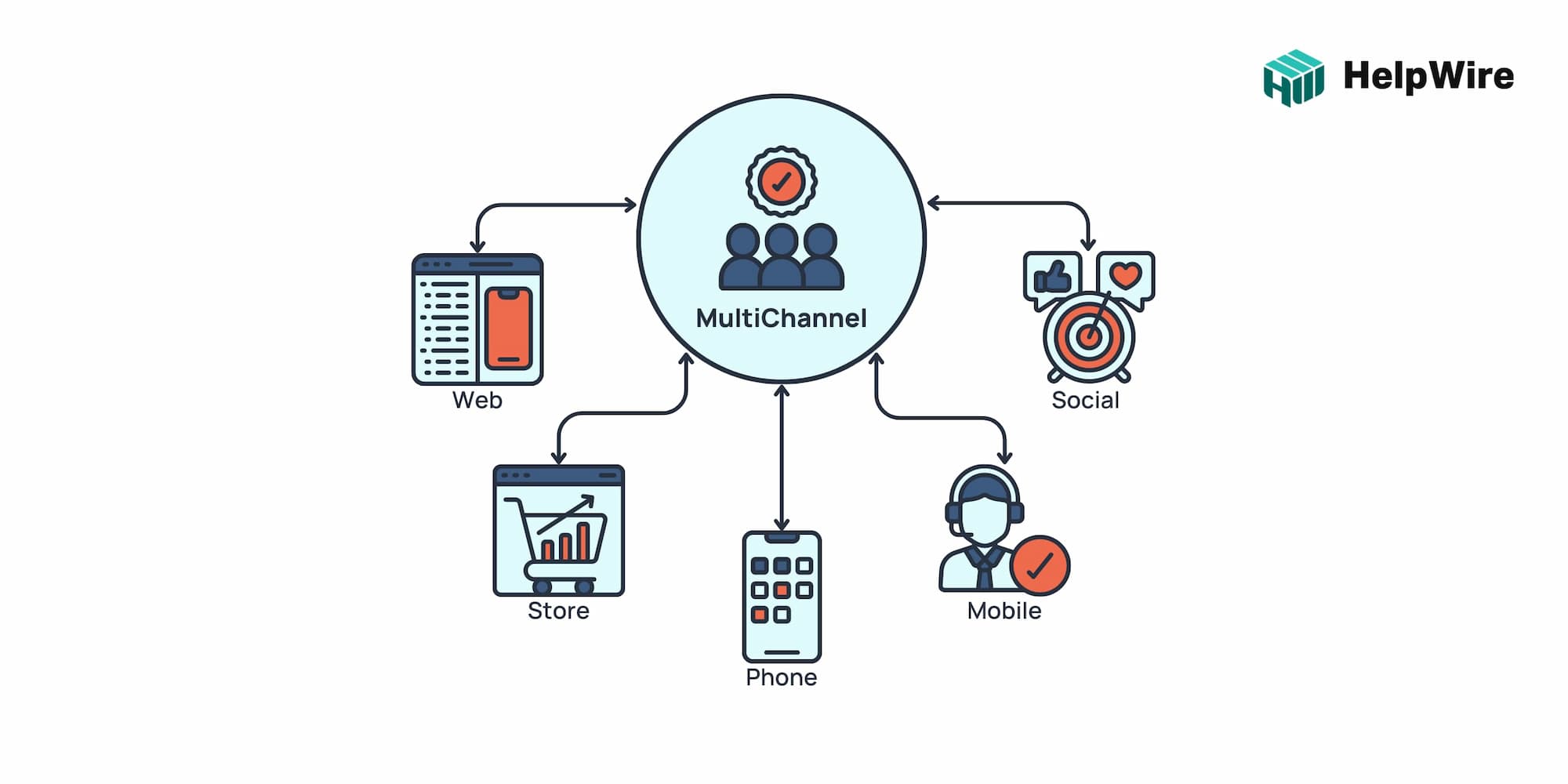
Multichannel customer support translates to a support team being available on every channel your customers frequent (from SMS to social channels.) Those using this method offer a variety of communication channels, but don’t necessarily connect them to one another into a seamless CX. In other words, multichannel experiences may permit customers to contact support via chat, phone, or SMS, but they can’t continue/transfer a conversation chain between these channels.
Benefits
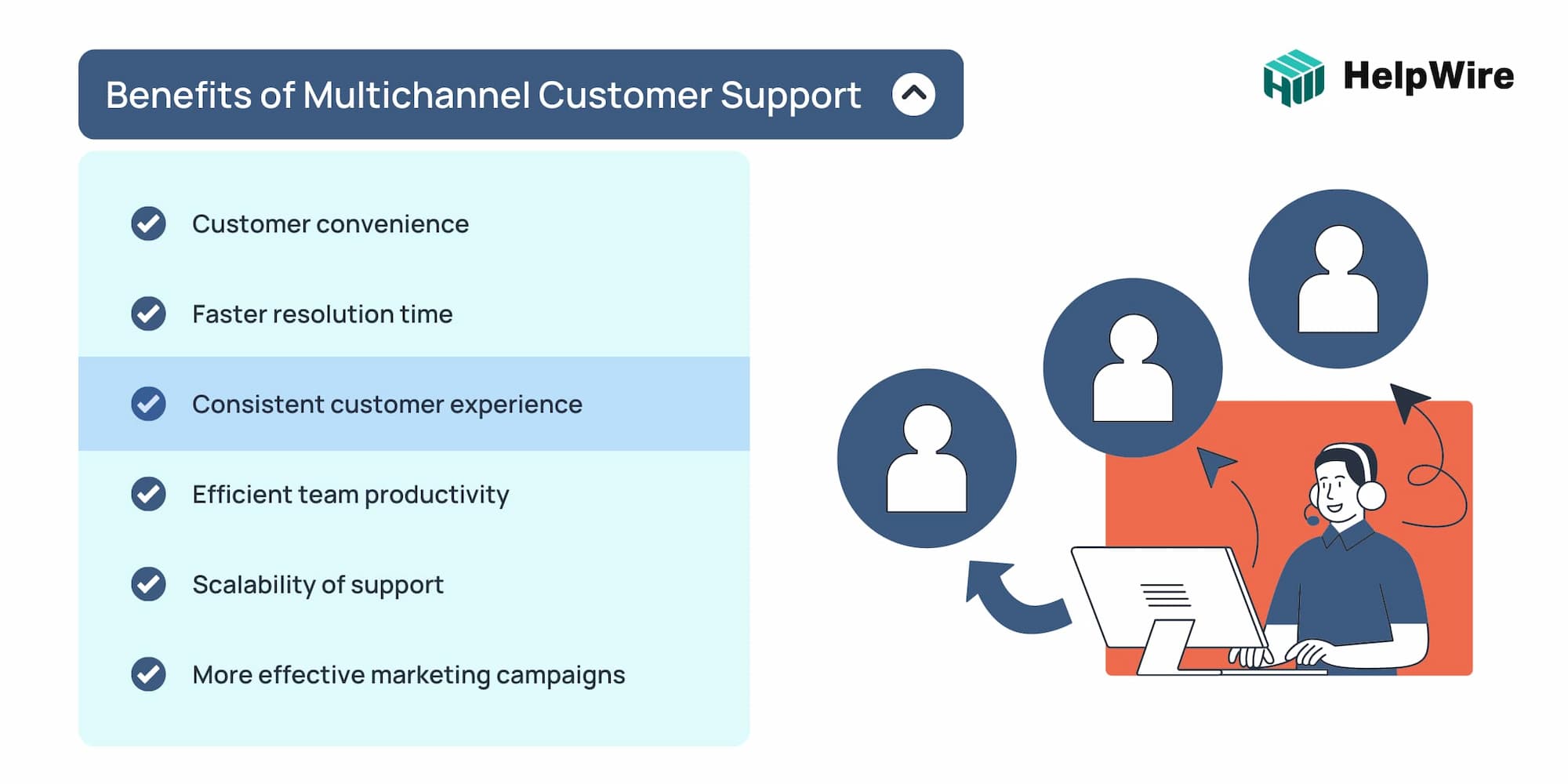
What Is Omnichannel Customer Service?
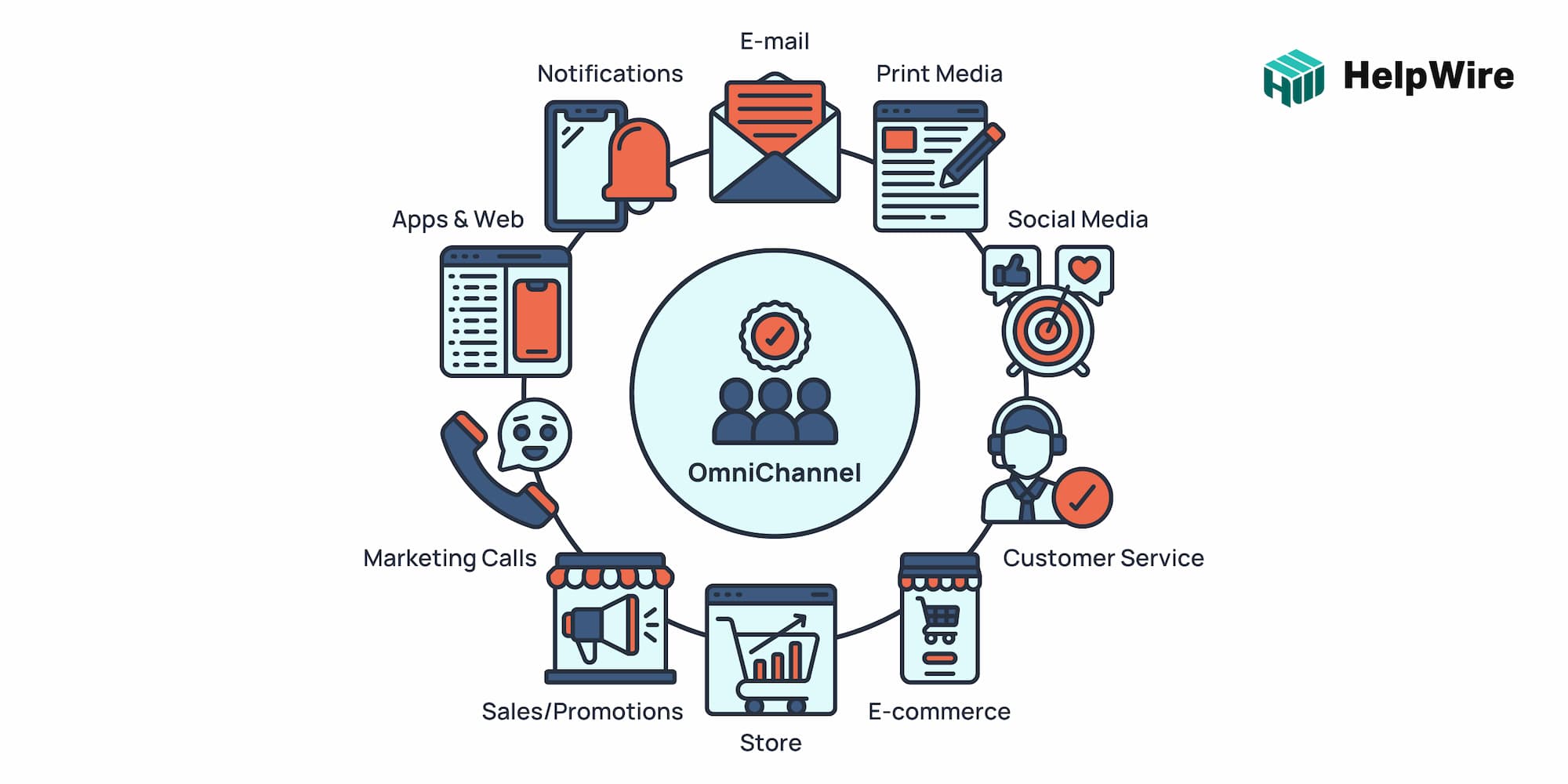
Omnichannel service approaches customer support by taking streamlining interactions into an unbroken communication journey for the end-user. During omnichannel experiences, conversation history and context transfers with the customer between channels—which lets the agent provide more personalized, real time support. All of which generates great customer service and repeat customers.
Benefits
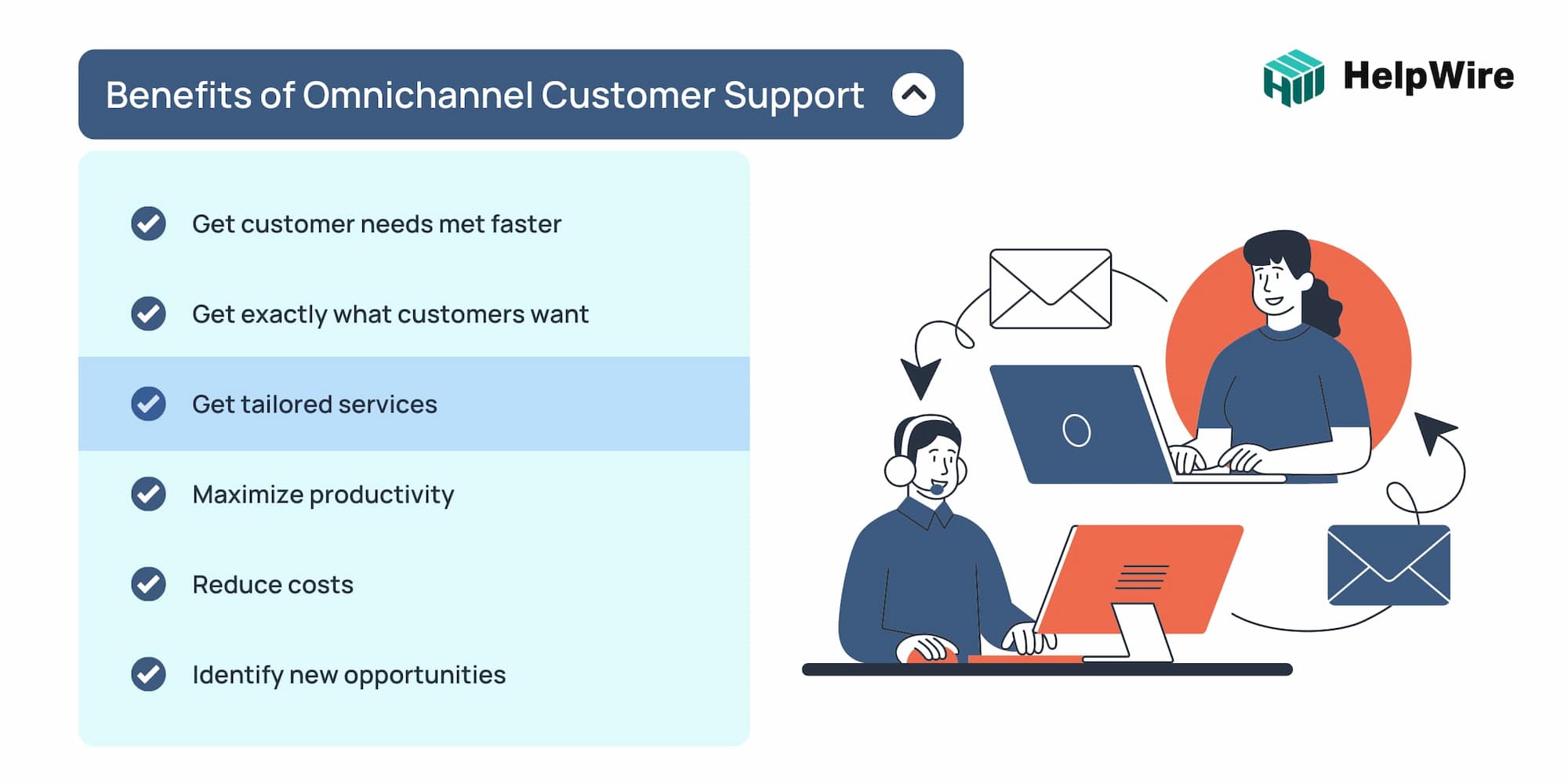
Omnichannel Customer Service Best Practices
Regarding omnichannel customer support integration, there are best practices worth reviewing to provide a more stable and effective strategy.
Understand Customer Preferred Channels
Organizations must first understand which channels their customers use to get information, make purchases, ask for help, and communicate. Businesses can execute this by using relevant data to uncover the platforms where their customers are most active.
Questions to ask:
- • Do the customers have an active online presence?
- • What platforms do they most frequently use?
- • Do they refer to online reviews prior to making a purchase?
Finding answers to the above questions can help you recognize the best channels to connect with your customers. This insight can then help you develop customer interaction frameworks that let your team:
- • Identify their wants and needs;
- • Identify the most effective service channels;
- • Map their journey to ensure support is effective and consistent.
Maintain Acceptable Response Times Across Channels
Different channels require different response times pending on how customers see the particular channel. An overwhelming 77% of customers expect live chat responses to happen within one minute, while 40% of customers expect social media replies to fall within an hour—rounding things off, responding to an email ticket can take as long as 24/hrs.
When businesses fail to meet these median response times their customers feel neglected—which means the brand’s reputation is damaged.
Omnichannel engagement software boasting powerful integrations can consolidate all customer interactions (from all channels) into a singular window. Teams can even route these queries to dedicated specialists automatically after establishing agent workload limits.
Respond Instantly With Live Chats
As was mentioned earlier, one of the largest pain points for those experiencing customer support is long wait times. Live chat software can help mitigate this frustration by offering real-time customer support. Based on a report by Customerthink, over 50% of buyers would prefer text-based customer support instead of phone calls when given the choice between the two options. This may appear obvious based on everyone’s mutual dislike for sitting on hold.
The benefits of providing live chat:
- • Offer immediate and personalized support to customers via live agents;
- • Enhance customer satisfaction by providing quick and effective responses;
- • Streamline omnichannel customer support to encourage greater brand loyalty;
- • Proactively interact with customers to increase conversions and rectify problems before they get worse.
Keep Customer Data Easily Accessible for Contextual Communication
When customers explain their issues, they expect brands to further the conversation easily, regardless of the team/channel they’ve used to communicate. It’s essential to keep a master record of customers’ details that are accessible across all departments participating in the omnichannel experience.
Use this data to understand customers’ overall sentiments toward your brand, and adjust your customer experience accordingly. Your brand may also start noticing what channels get used most, letting you optimize engagement activities based on the specific platform.
Improve and Empower Your Presence on Social Media
In the modern era, social media has grown beyond a basic tool for communication between peers. Now it can be leveraged to create effective customer service that increases customer satisfaction.
A majority of individuals have at least one social media account—be it Twitter, Facebook, LinkedIn, etc.
Brands can leverage these interactions in their omnichannel strategy by:
- • Providing optimized support via prompt responses to customer inquiries through comments and messaging;
- • Nurture and grow brand awareness and omnichannel customer engagement by positioning products/services for the specific target audience;
- • Compiling social data insights and implementing them into other platforms in your strategy—creating cross-channel support.
Customers Care About Self-Service Options
As an element of your omnichannel strategy, offer customers self-service opportunities that allow them to fix their own issues without the involvement of a support technician.
Believe it or not, over 60% of Americans would rather solve their own basic issues using a self-service app or website.
Offering online self-service resources that customers can reference (such as an FAQ or resource libraries) saves time for both end-users and customer service agents—which develops a more fluid and pleasant CX.
Track Engagement Across Channels
After establishing different customer engagement channels, track how customers engage on each platform. Then your brand can notice which engagement activities are receiving great engagement, and strategize ways to increase those that underperform.
Engagement metrics include:
- • Loyalty program sign ups
- • Engagement on social media (comments, shares, likes, etc)
- • Open and click-through rates on email marketing
- • Volume of active and new community members
- • Referral code usage
- • Website traffic and the volume of unique visits
Please note: How you choose to track metrics will entirely depend on the channels/platforms you use.
How to Deploy an Omnichannel System
While the point of an omnichannel experience is mostly straightforward, organizations continue to test how to manage it effectively. A large volume of brands have no issue managing a multichannel experience model, but industry leaders are turning their attention (and investments) to omnichannel to develop a stronger and more pleasant customer experience.
Now it’s time to assess methods that create a more optimized workflow, and how to integrate omnichannel customer service effectively.
Understand the Behavioral Patterns of Your Customers
It all starts here—and cutting corners during this step can cause a lot of problems down the line. Since omnichannel experiences are strictly about providing a fluid and convenient customer journey, it’s crucial to understand how it began.
Collect Relevant Customer Data
Collect all relevant information pertaining to your customer. This should include their preferences for interacting with your organization. A CRM system is a great place to start. Review whatever analytics tools you use, as well. This can help you learn even more about how your customers like to communicate when they require customer support.
Use a Survey
Surveys are another excellent option for understanding your customers, and the obstacles they have.
If an end-user visiting your website executes a certain action, offer a pop-up with a very brief survey regarding their experience/satisfaction using your site. You’d be surprised at just how much valuable data you can collect this way.
Use the Correct Tools for Omnichannel Customer Engagement
The right technology is crucial to delivering a fluid and effective omnichannel customer experience.
To let customers easily transition between your brand’s mobile app and a chatbot, organizations must utilize the appropriate digital tools and technology enabling real-time data flow and the best support for customers via their preferred touchpoints.
Here are a few key tools for enhancing omnichannel customer experience:
- • Chatbots: Use chatbots to interact with customers 24/7, as well as provide real-time solutions to basic queries
- • Live chat: Offer real-time support for the sales and support-related questions using live chat to nurture pleasant customer experiences
- • Live engagement tools: Co-browsing lets your brand work with your customers via sharing their browsers to guide the end-user through a complicated form. Video-based call centers even let your organization recognize problems more quickly so your team can provide personalized solutions
Implementing the right digital tools and engagement strategies lets your organization nurture your relationship with existing customers and fuel loyalty to your brand.
Discover Top Omnichannel Contact Center Solutions
We hope this article has empowered you with a fount of insight into omnichannel customer service, its advantages, and the best methods to ensure your customers have consistently positive experiences. Now that you’re armed with this omnichannel support information, it’s time to consider which omnichannel communication software solutions are best for your business.
The below table offers a basic outline of top omnichannel communication providers. Take a look at this high-level overview to decide which options are worth further investigation.
Table of Comparison
Provider | Cost | Top Features | Ideal For |
Quote-based—beginning at: $90.00-$100.00/user per month | • My Agent Experience
| Large enterprises or organizations in healthcare or telemarketing | |
Quote-based | • Unlimited MMS and SMS messaging up to 1K/characters
| SMBs with less than 100 employees using mostly remote or hybrid teams | |
Quote-based, beginning at: $100.00-$175.00/month per agent | • Advanced email routing
| Medium-sized organizations relying on digital-first communication or fully remote teams. Used widely in the financial industry | |
Quote-based, beginning at: $150.00/user per month | • Programmable video chat support
| Organizations needing a highly customizable solution — and entities wanting to purchase individual APIs/communication channels | |
3 paid plans ranging from: $75.00-$140.00/month per agent | • Genesys PureEngage self-service
| Organizations needing to provide high levels of customer self-service — along with entities integrating lots of other professional comms software into their Genesys platform |